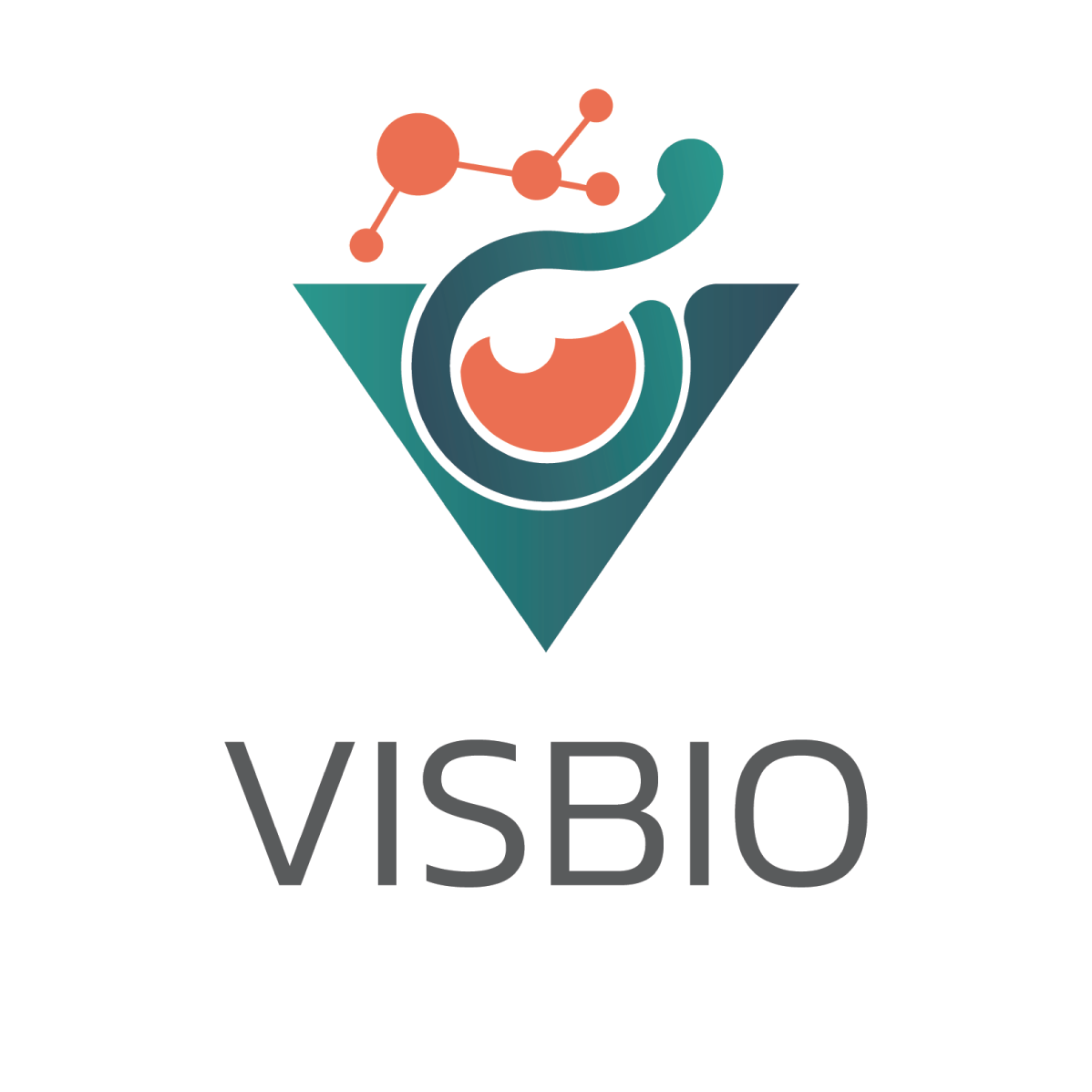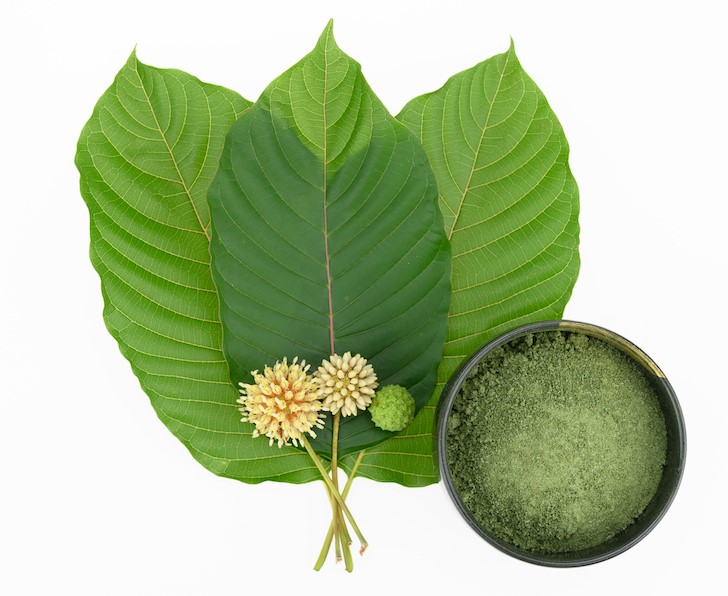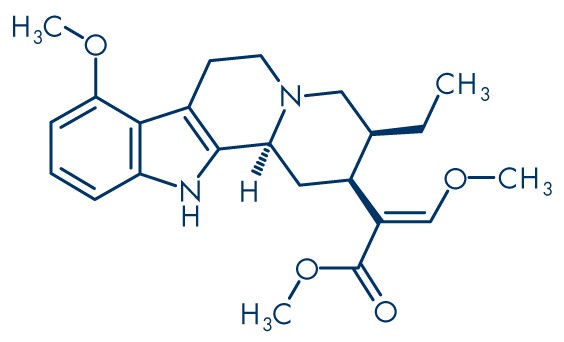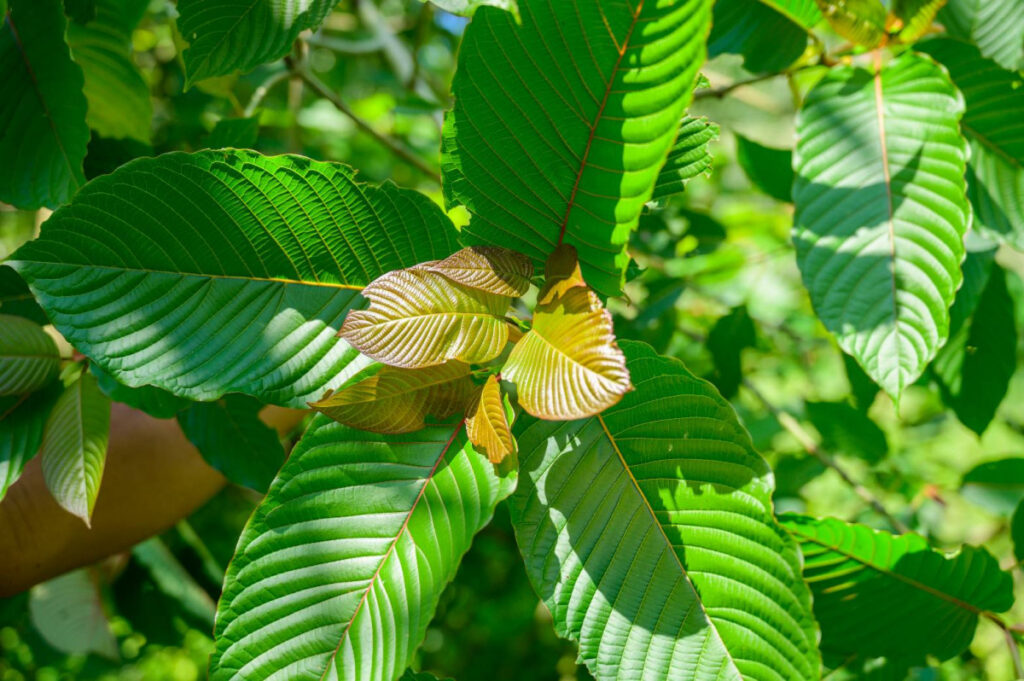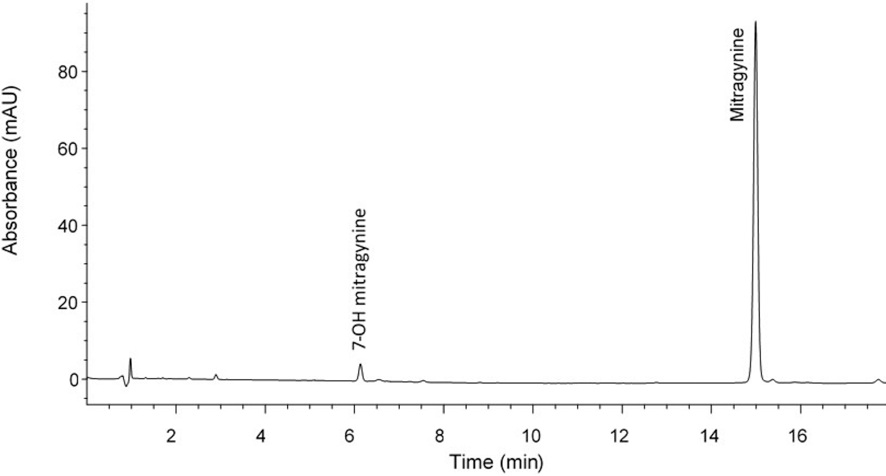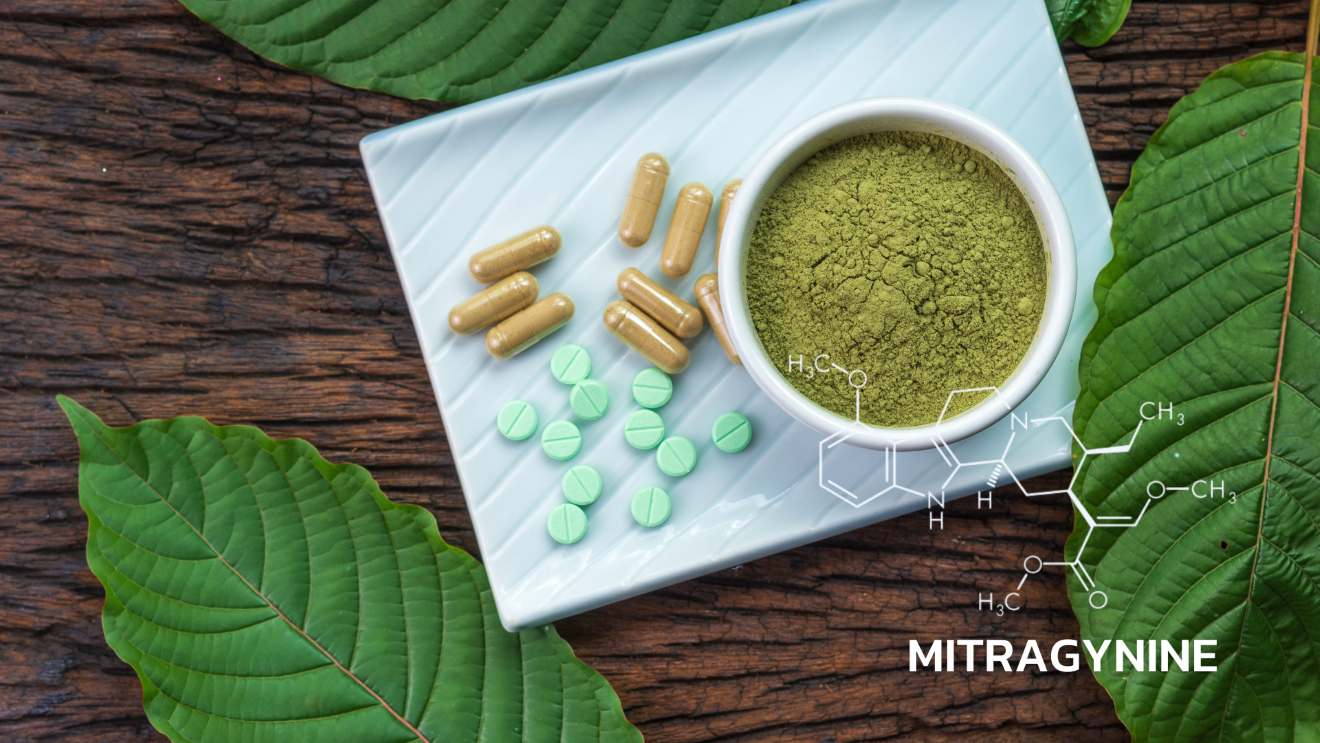
Service Information for Analysis and Quantification of Mitragynine Content using HPLC Technique
VISBIO offers services for inspection and analysis of the biomarker component, Mitragynine, utilizing the High-Performance Liquid Chromatography (HPLC) technique. We provide these services for all products within the health and beauty industry, as well as the food and beverage industry. Mitragynine, obtained from the Mitragyna speciosa plant, is recognized as an economically significant plant due to its pharmacological properties that effectively alleviate various severe bodily pains. It has been unlocked from the controlled substance list and is of considerable interest.
Mitragynine not only aids in pain reduction but also has potential in lowering blood sugar levels, an attribute associated with the alkaloid group called Mitragynine. Preliminary research suggests that Mitragynine from the Mitragyna speciosa plant can serve as an alternative to morphine for pain relief. Therefore, the analysis and quantification of Mitragynine in the plant are vital, and HPLC technique stands as a widely employed method for this purpose.
Kratom
Kratom, scientifically known as Mitragyna speciosa (Korth.) Havil., is a plant belonging to the Rubiaceae family. It has been used for traditional medicinal purposes for many centuries in Southeast Asia, particularly in countries like Thailand. Kratom is a medium-sized evergreen tree that can reach a height of up to 15 meters. Its leaves are arranged in pairs, oval-shaped, tapering at the ends, and have a distinct central vein. The flowers are densely packed in inflorescences at the tips of branches, with each inflorescence having 1-3 short stalks.
Each inflorescence contains yellow flowers. The calyx is short and tube-like with 5 lobes at the end. The corolla, which is longer and split into 5 lobes, surrounds the calyx. Male flowers contain 5 stamens, while the ovary of the female flower is located beneath the corolla. The fruit is small, has a long stalk, and contains winged seeds. There are multiple strains of kratom in Thailand, each characterized by differences in leaf shape and color. Notably, the “Red Vein” strain has red stems and veins, while the “Green Vein” strain has lighter green leaves. The “Maeng Da” strain has larger leaves with pronounced ridges along the top edges.
Types of Kratom
Kratom comes in various strains distinguished by characteristics like leaf thickness, stem and vein color, and flower appearance. In Thailand, there are four popular strains: “Golden Coin,” “Maeng Da,” “Red Vein,” and “Maeng Da (Leaf-Tail).” Each strain also differs in the strength of its effects, taste, and aroma. For instance, strains like “Golden Coin” and “Maeng Da” are known for their relaxing and moderately intoxicating effects, while strains like “Red Vein” and “Maeng Da (Leaf-Tail)” have a more bitter taste and stronger stimulating properties.
Kratom can be found in certain provinces of central Thailand, but it is more abundant in natural forests in the southern regions such as Surat Thani, Nakhon Si Thammarat, Trang, Satun, Phatthalung, Songkhla, Yala, Pattani, and Narathiwat.
Important Information and Chemical Structure of Kratom
Kratom leaves contain significant compounds, primarily Mitragynine, which is an alkaloid compound. Mitragynine is the most abundant alkaloid found in kratom. The mechanism of action of Mitragynine and its derivatives (such as 7-hydroxymitragynine) involves binding to opioid receptors, leading to central nervous system depressant effects, similar to other substances in the same group, such as psilocybin and LSD.
The types and quantities of alkaloids found can vary depending on the cultivation source and harvesting time. They can be classified into three categories based on their chemical structure:
- Indole Alkaloids
- Oxindole Alkaloids
- Elavanoids
In traditional Thai medicine, kratom leaves have been used to relieve abdominal pain, treat diarrhea, alleviate discomfort from muscle fatigue, and more. Currently, traditional use of kratom persists in the southern regions of Thailand, where fresh kratom leaves are chewed or processed into various forms, such as boiling them to make tea, drying them, or grinding them into a powder for consumption. This usage is prolonged due to the presence of Mitragynine, the primary active compound in kratom, which interacts with opioid receptors, providing pain-relieving and similar effects. Unfortunately, there have been instances of misusing kratom by combining kratom leaf extracts with contemporary medicines, carbonated beverages, energy drinks, or other substances to induce intoxication and stimulation.
Cancellation of penalties for Category 5 narcotic substances
The legislation regarding the kratom plant was passed by the Parliament since February 2564 but it still cannot be cultivated freely until there is a Royal Decree, which was officially announced on May 26, 2564, and will take effect 90 days from the announcement or starting from August 24, 2564.
On May 26, the Royal Gazette published the Narcotic Act Version 8, BE 2564, with the key importance being that kratom is currently categorized as a Category 5 narcotic according to the Narcotic Act BE 2522. However, many countries have not designated kratom as a narcotic, to align with international principles and the context of Thai society in some regions where the consumption of kratom is a part of traditional culture. Thus, it is appropriate to remove kratom from being categorized as a Category 5 narcotic.
Therapeutic usefulness and benefits of treatment
Traditional Thai doctors use kratom leaves to create medicine for relieving abdominal pain, reducing diarrhea, alleviating muscle pain, and calming nerves. They prepare the medicine by boiling the bark and leaves to create a drink that is consumed for treating ailments such as upset stomach, abdominal pain, muscle pain, gastric issues, diabetes, high blood pressure, and skin diseases. Additionally, kratom is a significant component in ancient Thai medical textbooks.
- Pain relief is due to mitragynine and 7-hydroxymitragynine, which have a mechanism of action in the brain. Mitragynine’s potency is approximately ten times weaker than morphine.
- It acts as an antidepressant by stimulating the production of serotonin, a neurotransmitter.
- Kratom extract has shown potential in alleviating alcohol withdrawal symptoms, similar to fluoxetine. Currently, the Narcotics Control Board has authorized traditional Thai doctors to cultivate and use kratom leaves for the treatment of specific patients.
Opportunities of Thai Kratom in the Health and Beauty Industry
The significant and intriguing opportunities of Kratom as a new economic plant are of great interest. After being unlocked from its status as a controlled substance and with a history of traditional use as an herbal remedy, where local healers have utilized the bark and leaves of the Kratom plant for various treatments since ancient times, Kratom holds considerable potential.
Mitragynine, a substance found in Kratom leaves, possesses properties that can be further developed for nourishment, treatment, and prevention of various diseases. However, this substance is present in very small quantities within Kratom. Therefore, the expansion of research and the extraction of natural compounds using technological methods to safely and effectively harness Mitragynine for beneficial purposes is essential. Importantly, this development must be conducted without categorizing the extracted compounds as addictive substances.
Consequently, the extraction of compounds from Kratom can lead to a wide array of products, such as beverages, dietary supplements, energy boosters, or even food items. There is also potential for exporting these products to larger markets.
Example of Mitragynine Analysis Report Using HPLC Technique
From the chromatogram, the chromatogram of Mitragynine is shown. The area under the curve is calculated to determine the quantity of Mitragynine by comparing it with the standard substance.
Literature:
- วุฒิเชษฐ รุ่งเรือง, ภ.บ., ว.ม. “พิษวิทยาของพืชกระท่อม ”ฝ่ายเภสัชกรรม โรงพยาบาลศิริราช คณะแพทยศาสตร์ศิริราชพยาบาล มหาวิทยาลัยมหิดล
- รศ.ดร.จุไรทิพย์ หวังสินทวีกุล “พืชกระท่อม (Kratom)” file:///C:/Users/USER/Downloads/Kratom%20CPE%20juraithip%2015%20March%202017—%20(1).pdf
- จุไรทิพย์ หวังสินทวีกุล. พืชกระท่อม [อินเทอร์เน็ต]. นนทบุรี: ศูนย์การศึกษาต่อเนื่องทางเภสัชศาสตร์ สภาเภสัชกรรม; สืบค้นจาก: https://ccpe.pharmacycouncil.org/index.php? option=article_detail&subpage=article_detail&id=25
- “ข้อมูลวิชาการ พืชกระท่อม” โดย สถาบันบําบัดรักษาและฟนฟูผูติดยาเสพติดแหงชาติบรมราชชนน
- เอกสิทธิ์ กุมารสิทธิ์. พืชใบกระทอมช่วยลดอาการลงแดงจากสารเสพติด. http://www.slideshare.net/UtaiSukviwatsirikul/katomsummary
- ประเภทของวัตถุออกฤทธิ์ตอจิตและประสาท. สืบค้นจาก http://www2.custom.go.th/jsp/hazard/public/narcotic/preface.pdf
- รศ.ดร. สุจิตรา ทองประดิษฐ์โชติ “ฤทธิ์ทางเภสัชวิทยา Mitragynine สารสำคัญในใบกระท่อม” สำนักงานข้อมูลสมุนไพร คณะเภสัชกรรม มหาวิทยาลัยมหิดล
- E. Mudge, P. Brown, 2017, Determination of Mitragynine in Mitragyna speciosa Raw Materials and Finished Products by Liquid Chromatography with UV Detection: Single-Laboratory Validation., Chemistry, Medicine, Journal of AOAC International.
